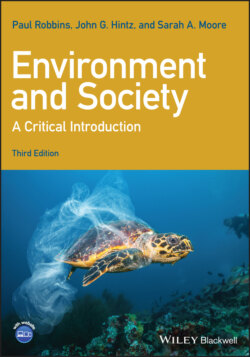Читать книгу Environment and Society - Paul Robbins - Страница 52
Green Consumption
ОглавлениеMarket-based solutions to environmental problems also tend to stress the power of consumer demand for changing environmental conditions. Pointing to an overall social shift toward green values, market advocates suggest that the most powerful way to change production systems is to allow consumers to “vote with their money,” and select and purchase green products, often at a premium. The success of organic foods, which are now very much in the mainstream of consumer culture, provides an example of consumers paying extra and creating incentives for more producers to change their methods and technologies.
Greenwashing The exaggerated or false marketing of a product, good, or service as environmentally friendly
Such approaches have drastic limitations. How does a consumer know, after all, the specific environmental impacts of products that carry handsome green labels? How do they know such products and companies have not been merely “greenwashed,” presented and advertised heavily as environmentally sound or benign with little substantive change in actual production practices, packaging, or disposal? Indeed, for many firms far more time and money are invested in green advertising than green practices (TerraChoice Environmental Marketing Inc. 2007).
Green Certification Programs to certify commodities for the purposes of assuring their ecological credentials, such as organically grown vegetables or sustainably harvested wood products
One way of confirming truth in green advertising is through the process of green certification, in which a third party monitors production of a range of products and provides a confirmatory “seal of approval” for products meeting specific standards. A number of governmental and nongovernmental green certification systems exist, including those for timber, organic foods, and energy-efficient appliances, among many others. As green certification systems continue to proliferate, however, their reliability and consistency become more questionable. Some certifications, for example, are established by companies themselves rather than third-party observers. Moreover, many countries have adopted their own standards. For example, the country of Malaysia has instituted its own independent certification for sustainable timber, which competes directly with international standards. This makes global trade in eco-friendly goods a confusing smorgasbord.
